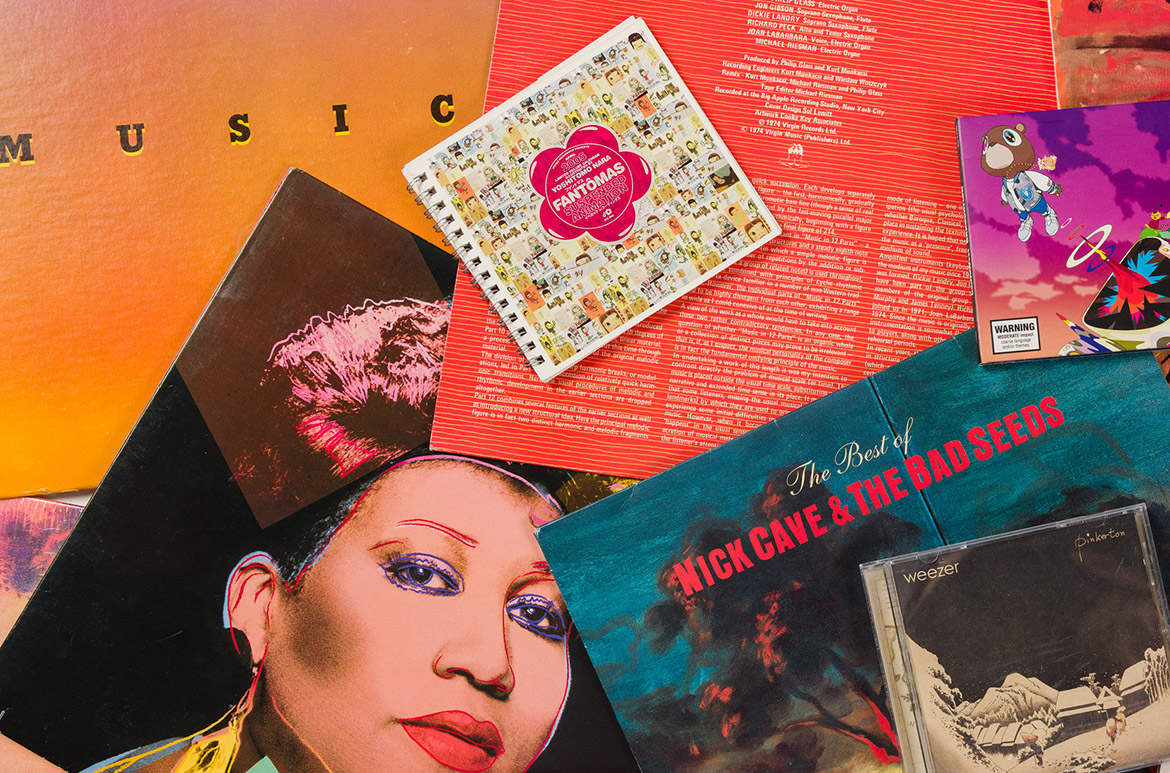From enigmatic artworks to repurposed images, I’m sure many can testify to similar experiences of being introduced to visual artists and its many ‘genres’ via their record collection.
In the second in the series — Sleevage: Collaborations between art and music — these musical conduits highlight the compact lessons in the history of art and design that artists in the QAGOMA Collection, such as Ryan McGinley, Tony Clark, Cindy Sherman, Sol LeWitt and Yoshitomo Nara, can provide listeners.
#5 Ryan McGinley — Með Suð Í Eyrum Við Spilum Endalaust (2008)
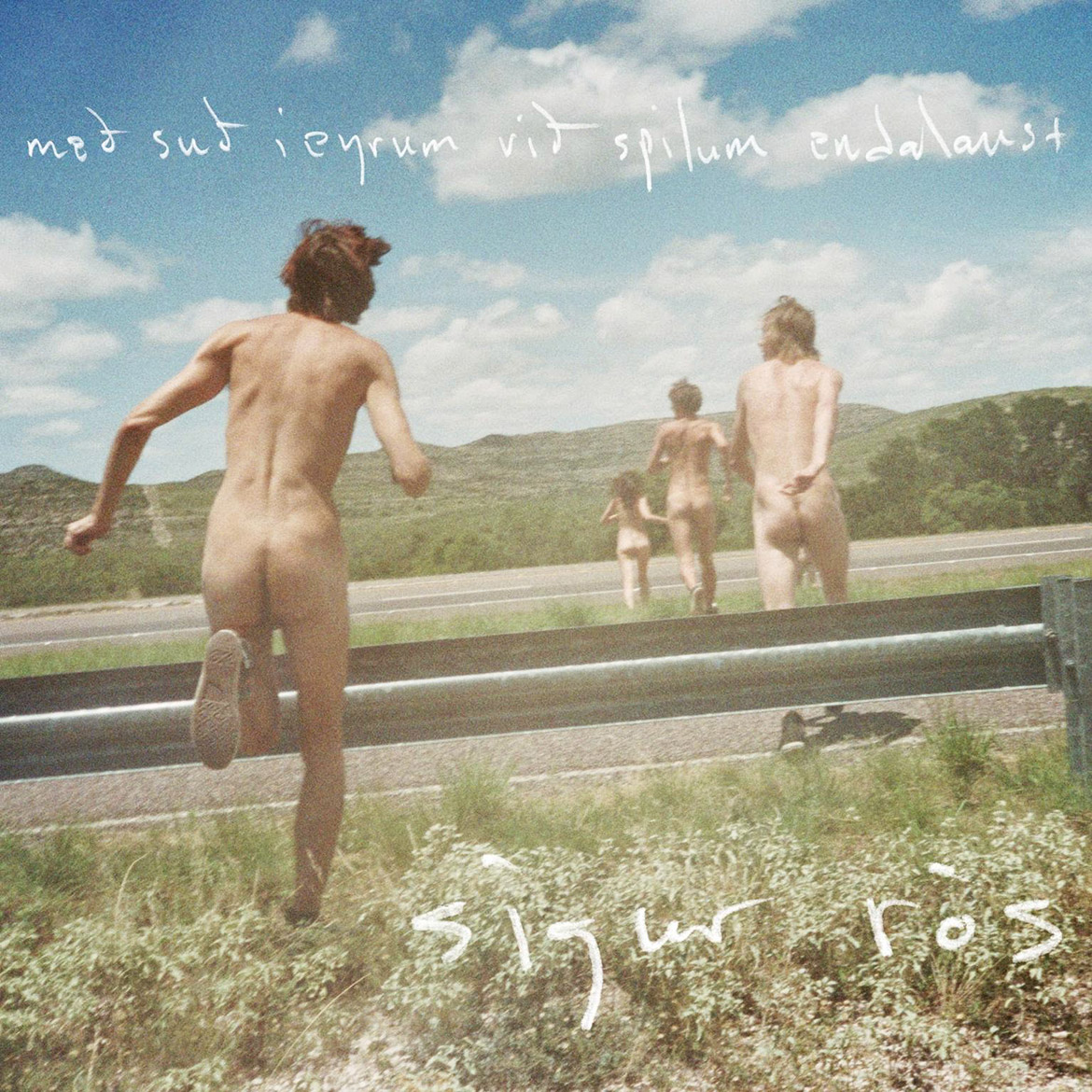
Nothing says nature and nudity quite like Icelandic post-rockers Sigur Rós 2008 album Með suð í eyrum við spilum endalaust (With a Buzz in Our Ears We Play Endlessly).
Originally commissioning renowned artist Olafur Eliasson for the sleeve and new stage show, the band deserted Eliasson’s ‘geometric Spirograph designs’ 10 days out from mastering in favour of frontman Jonsi’s photographer friend Ryan McGinley’s Highway 2007.
Depicting four skinny youths joyously free spiriting across a motorway, McGinley’s photograph perfectly evokes the synergy between Sigur Ros’s looser and more spontaneous approach to writing and recording With a Buzz in Our Ears…
#4 Tony Clark — The Best of Nick Cave & The Bad Seeds (1998)
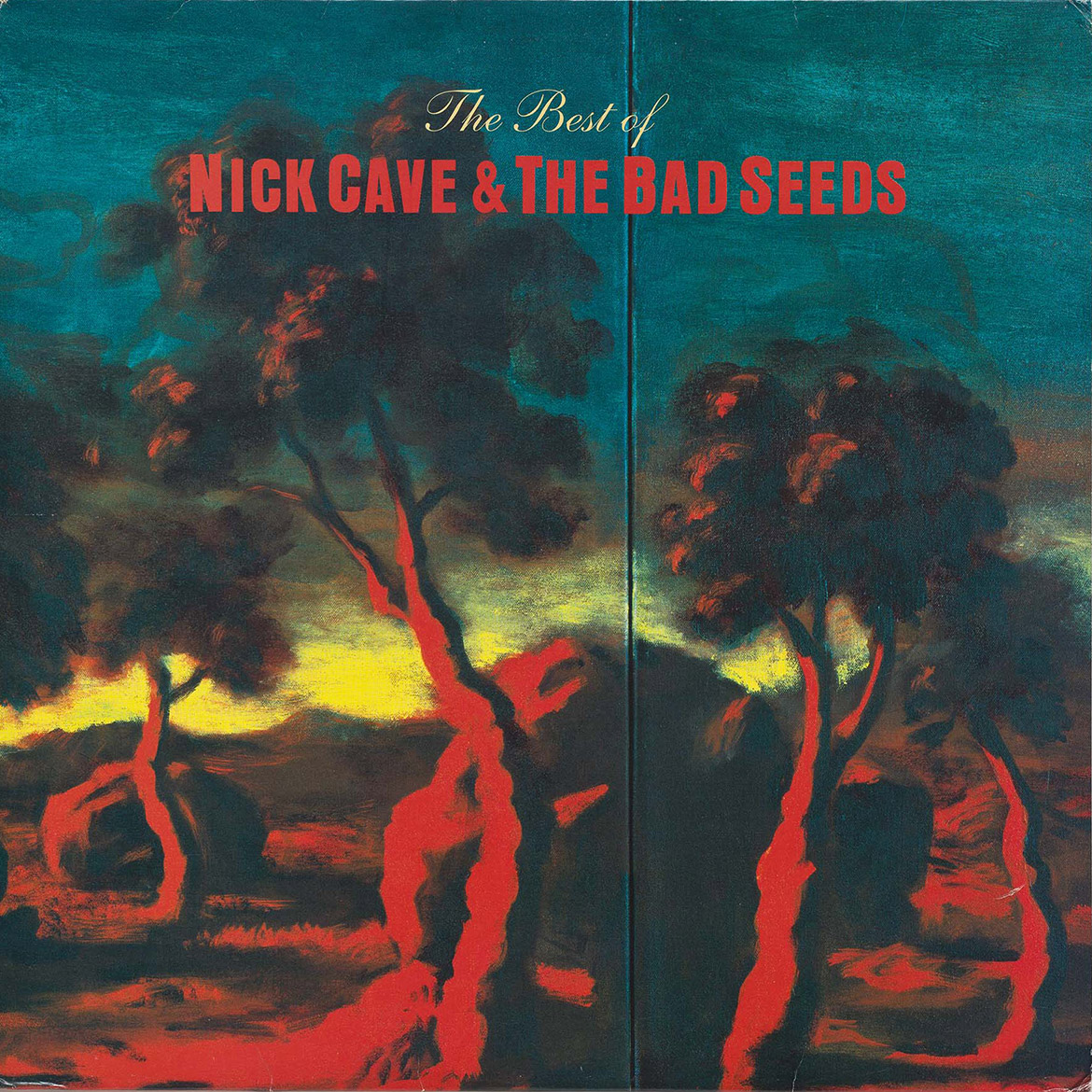
Friends with Nick Cave since the 80’s, Australian painter Tony Clark was asked to come up with a landscape for the band’s upcoming 1998 retrospective album — The Best of Nick Cave & The Bad Seeds.
Paying homage to the popular 19th century pictorial card game Myriorama, a game made up of a sequence of cards that could be rearranged into any order to produce a continuous scene, Clark’s chosen sections from his own ongoing Myriorama series show ‘six crippled olive trees blasted by a bloody red light’.1
Integral to the image is the shared horizontal bands required for a Myriorama sequence to work. For Clark, it was crucial that the cover show the split in the image as it indicated that each section could work as an independent work or be matched alongside others from the series to construct an endless panoramic landscape no matter what order you arranged them in.
And for Clark, vividly bringing to life the unsettling and eerie beauty of The Bad Seeds music was ‘about as good as it gets’. 2
#3 Cindy Sherman — Fontanelle (1992)
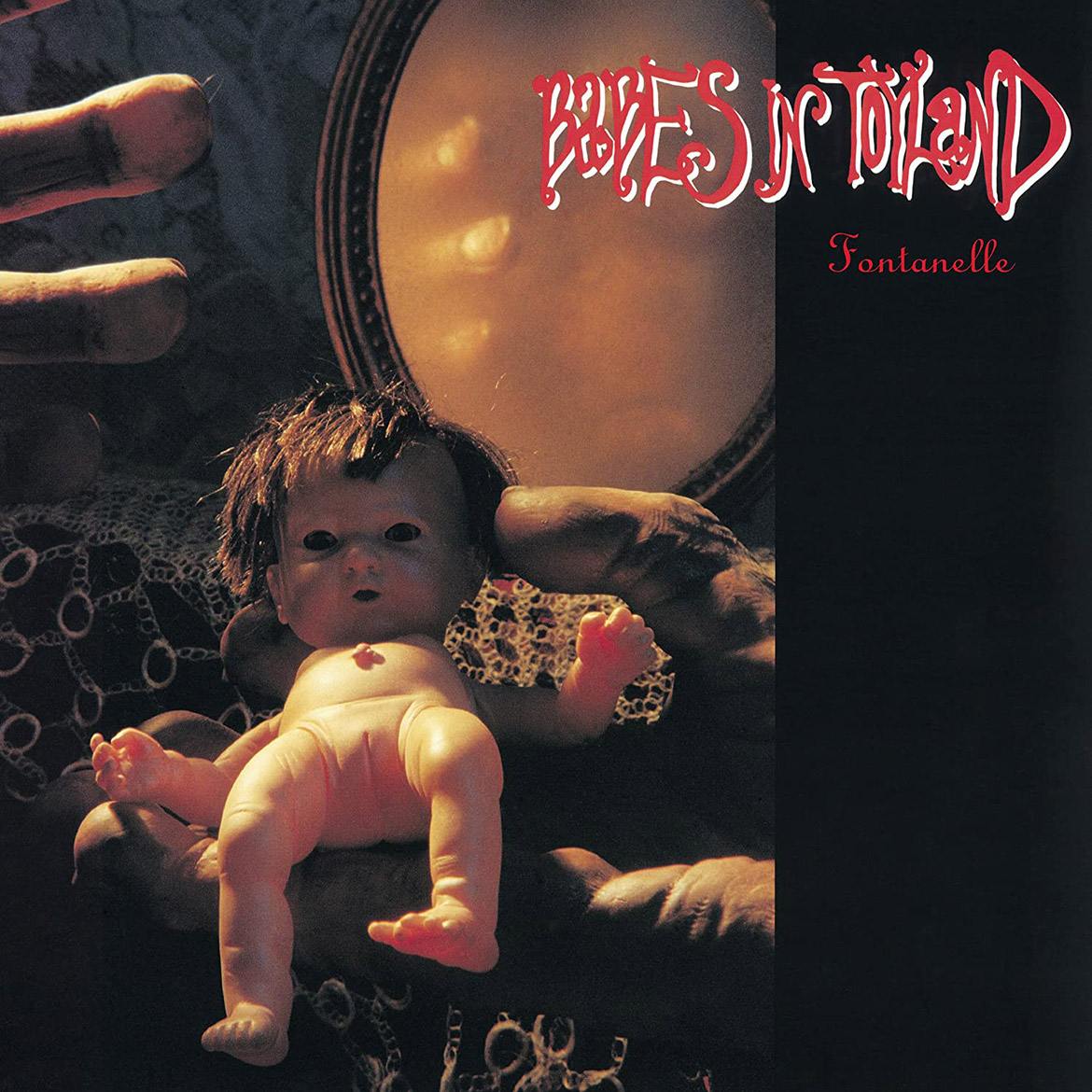
Minneapolis alt-rock band Babes In Toyland hooked up with friend and artist Cindy Sherman for the cover of their 1992 album Fontanelle. Playing off the band’s name and the “soft spots” found in an infant’s human skull, the cover features a child’s doll splayed out on top of a dresser.
The Babes and other feminist musicians of the early 90s adopted images of dolls, girlhood and plastic body parts as a direct response to the sexualisation of women, gender identity, body autonomy, and power structures of the male-dominated punk rock scenes.
Hinting at Sherman’s Sex Pictures 199) and prefiguring her Horror and Surrealist Pictures 1994–96, Sherman remarked in a 1997 interview that ‘I wasn’t really interested in showing traditional sex; the most obvious thing to do with mannequins would be to “put these parts together and do a close-up.” ‘I was more interested in using the sexuality of loaded images to say something even greater than that sexuality.’ 3
#2 Sol LeWitt — Music in Twelve Parts (1976)
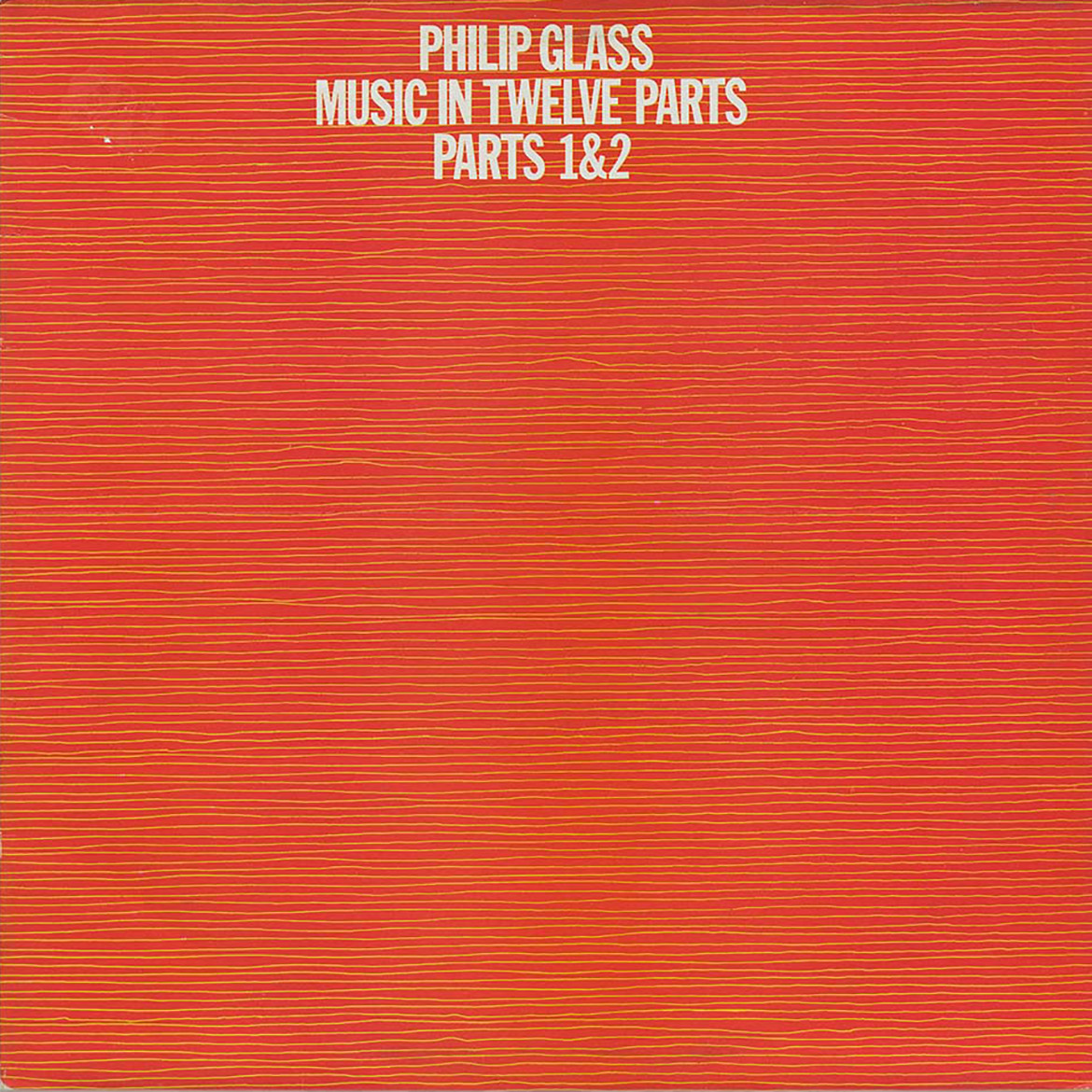
Music in Twelve Parts is a set of twelve pieces written between 1971 and 1974 by the American composer Philip Glass. Regarded as a major compositional work, Glass’s friend, the pioneering Minimalist and Conceptual artist Sol LeWitt, created a sleeve that fittingly resembled a music score.
Gravitating towards the New York experimental scene of the 1960s and 1970s, LeWitt worked across visual art, performance and music, often equating his working methods, repetitive structures and written instructions to that of composers like Glass and fellow American Steve Reich who generate musical notation for others to play and interpret: ‘It’s as though I were writing a piece of music for somebody to play on the piano — there’s plenty of opportunity to improvise within the limits.’ 4
At a time when operas, symphonies and concert music were conservatively packaged, LeWitt’s taut horizontal lines mimic Music in Twelve Parts hypnotic musical sequences.
#1 Yoshitomo Nara — Kimi Ga Suki * Raifu (2019) Suspended Animation (2005)
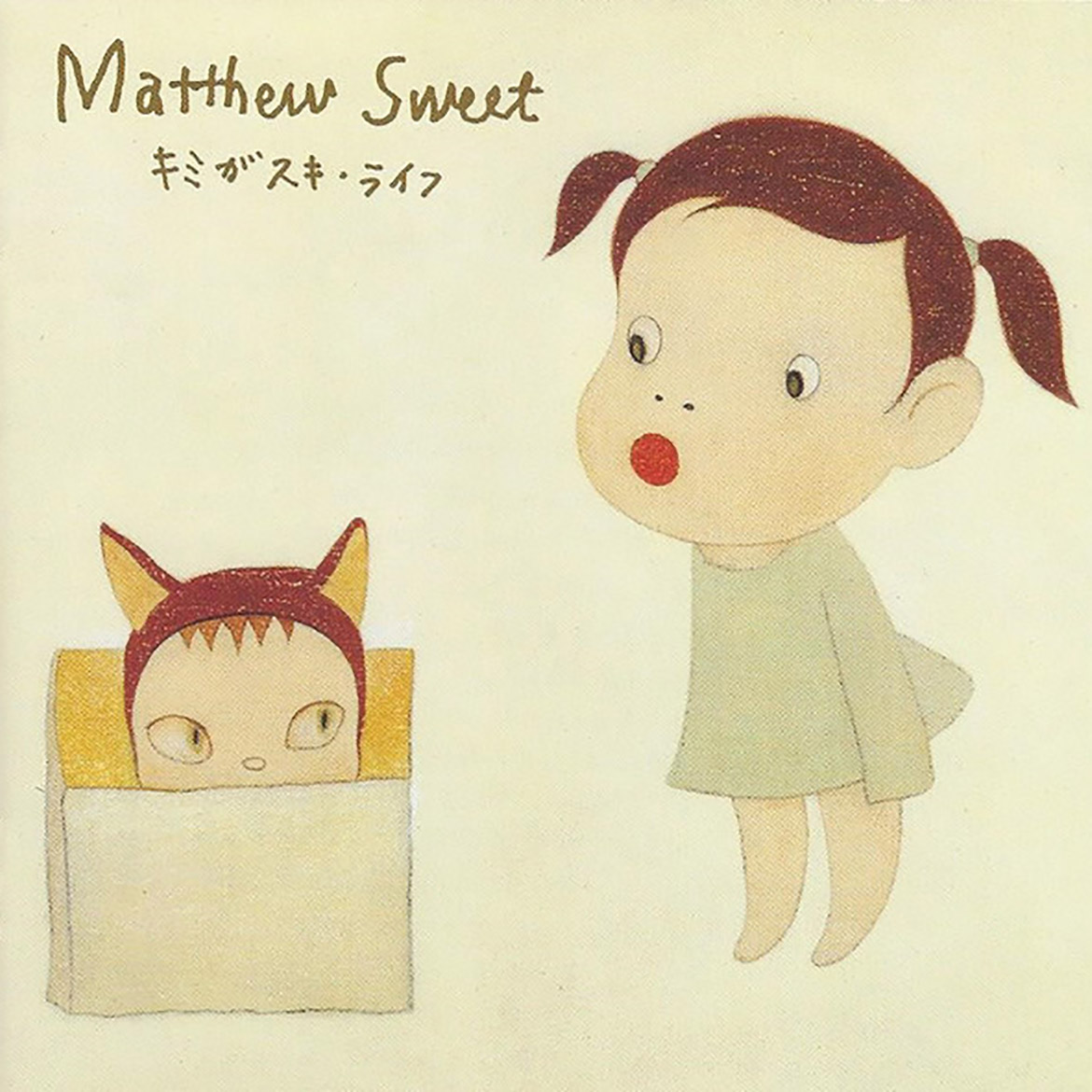
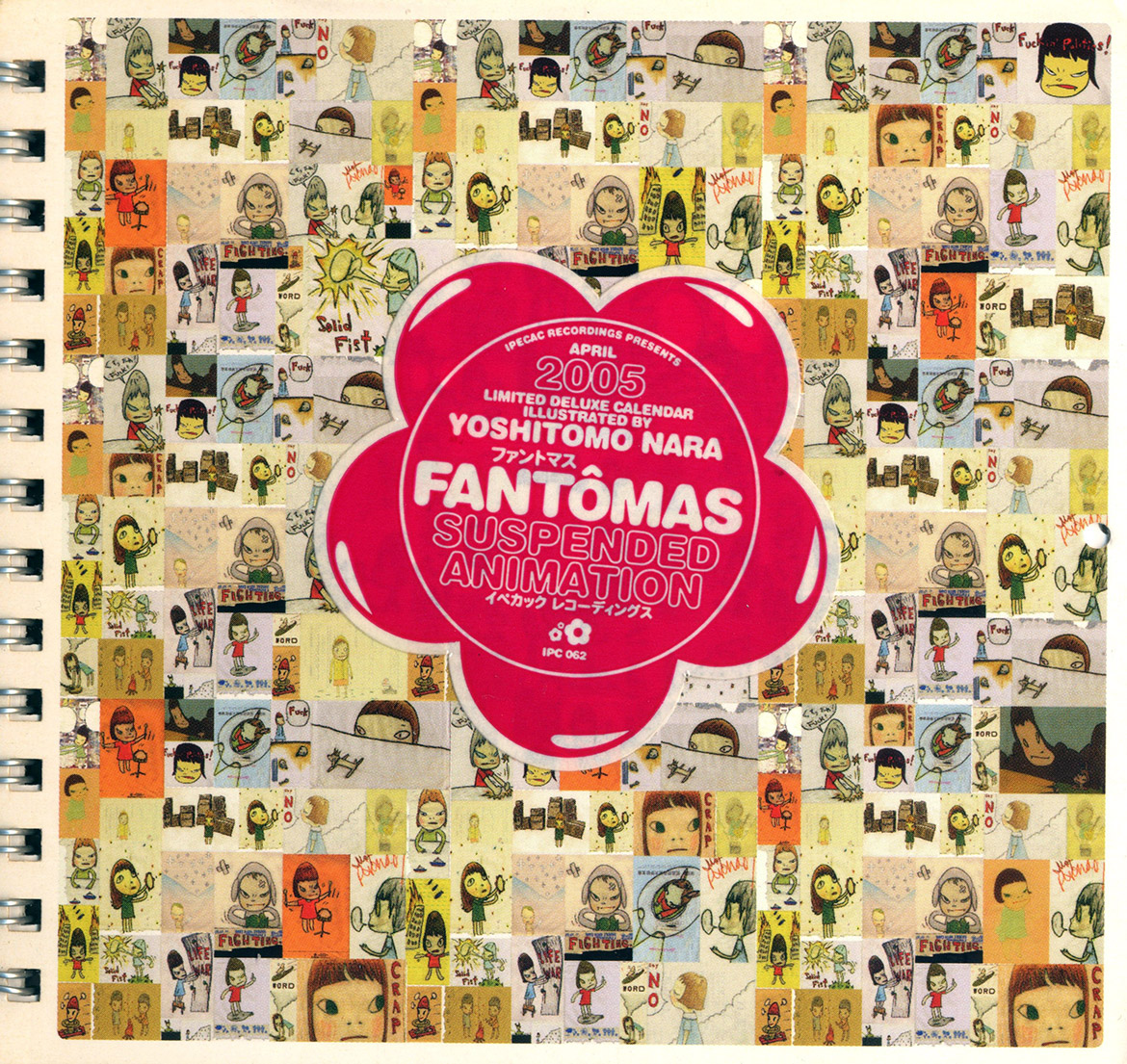
Central to Yoshitomo Nara’s practice is the anti-establishment spirit of punk rock discovered in his teens. Spending time in record shops, attending gigs, collecting records and painting imaginary album cover art, Nara took inspiration from cult figures like Neil Young, Gram Parsons, The Stooges and The Ramones.
Identifying with their unhinged guitar wielding, DIY attitudes and outsider lyrics, his paintings and drawings riff on the isolation, alienation and ‘emotional intensity’ found in the lyrics of his favourite punk, folk, and rock and roll heroes: ‘Then I came into contact with punk — this music struck a nerve and penetrated me deeply. It matched the way I was feeling at the time and I have remained true to punk.’ 5
Ever the fan, Nara continues to resonate with audiences beyond the art world with bands like Shonen Knife, Yo La Tengo, Fantômas, Jim Black, Matthew Sweet and R.E.M. commissioning Nara to represent the contemplative and melancholic bent these bands are known for.
Kristen Hayden is former Library Technician, QAGOMA Research Library
Endnotes
1 Nick Cave, ‘Nick Cave: Black dogs and other animals.’ Art & Australia, vol. 46, no. 1, spring 2008, p.138.
2 Robyn McKenzie, ‘The rules of the game: Tony Clark’s Myriorama.’, Art & Australia, vol. 46, no. 3, autumn 2009, p.391.
3 Noriko Fuku, ‘A woman of parts’ Art in America, vol. no., June 1997, p125.
4 Veronica Roberts, ‘Like a musical score: Variability and multiplicity in Sol LeWitt’s 1970s Wall Drawings’, Master Drawings: Modern & Contemporary Drawings, vol. 50, no. 2, summer 2013, p.196.
5 Yoshitomo Nara, ‘“My Superficiality Is Only a Game”: A conversation between Stephan Trescher and Yoshitomo Nara’, Lullaby Supermarket: Yoshitomo Nara, publisher, place of publication, 2002, p. 105.
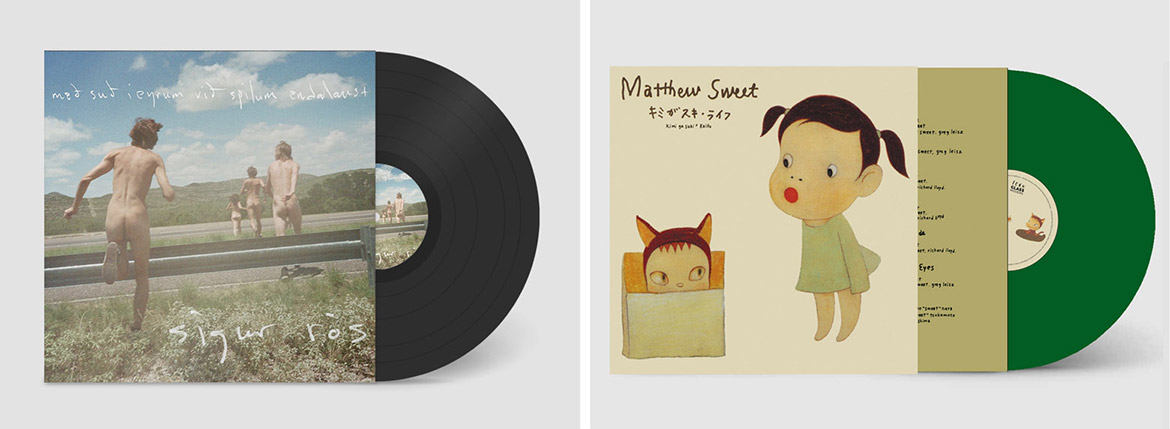
QAGOMA Research Library
The QAGOMA Research Library is located on Level 3 of the Gallery of Modern Art (GOMA). Open to the public Tuesday to Friday 10.00am to 5.00pm. visit us in person or explore the online catalogue. Access to special collections is available by appointment.
#QAGOMA
